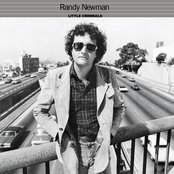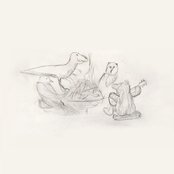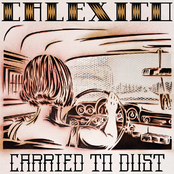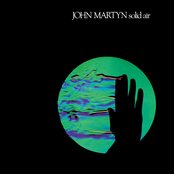
Mr Charles Ruddock, seated second from right, front row. Image kindly supplied by Dorothy Ruddock via David Evans.
David Evans’ painstaking recording and sharing of the Ruddock family archive continues today with a look at the post Great War history of Walsall Wood man, Charles Henry Ruddock.
A few months ago, we kicked the series off with an article about Charles’ history in the army in the late Victorian era and South Africa, which has caused no small amount of debate and ponderance amongst the blog readers.
We also featured Charles’ history in the Great War a couple of weeks ago.
This occurred following the wonderful material that recently came to light, so kindly donated by Julie Whitehouse and Dorothy Ruddock who have continued to share a hugely disparate range of fascinating family ephemera, most of which is still yet to be published here.
This is the third instalment of the history of Charles Henry Ruddock, with a couple more to come!
A good starting point on the subject is the post here regarding the Cape by Janet Davies Warallo followed by the post about Dulce Domum and the Ruddock family photos.
My thanks again to Dorothy, Julie and David – if you have anything to add, please do: comment here or mail me, please – BrownhillsBob at Googlemail dot com. Cheers.
Charles Henry Ruddock: A local life after the Great War
Charles’ long periods of service in the Army had ended. This Attestation of 1890 shows that he was enlisted in to the 3rd battalion, South Staffs Regiment.
Wikipedia says this of the 3rd Battalion:
The 3rd, Militia battalion, was embodied in May 1900, and disembodied in December the same year. They were again embodied in May 1901, and the following month 500 men embarked for service in South Africa during the Second Boer War. The battalion returned in July 1902.
Charles’ discharge papers, 1918
The family notes state that Charles returned to Ogley Square, Brownhills and that ‘he founded the Brownhills British Legion and United Services Fund Branch of which he was secretary for many years’. In his capacity as secretary he fought and many cases of errors in pension brought to his attention. The Brownhills Branch of the British Legion headquarters were in the George IV Inn, or The Old Fourpenny Shop as it was called.
Charles started pig and poultry breeding whilst living in Ogley Square. The notes continue, saying that during the 1926 strike he gave one peck of flour each week to every miner at Ogley Square who was out on strike.
He was a member of the Brownhills Memorial Hall Committee and that he was instrumental in having the maplewood dance floor installed in the hall, and was also known for staging military tableaux in the Brownhills Flower Show Processions.
He was employed as clerk at the Brownhills Labour Exchange which was held in ‘the present Scouts headquarters’ (1959) and continued in employment until his retirement. He started up a coal merchants business. In his retirement he drew up the plans and built his bungalow in Occupation Road, by the Cape.
A trustee of Ogley Hay Working Men’s Club, Charles was instrumental in having the new extension built there ( 1930s).
He was a member of the Old Comrades Association and attended their functions until he became bed-ridden.
Charles’ obituary printed in the press mentions that he was vice-president of Friezland Lane Working Men’s Club, and that at his funeral service in 1959 his coffin was draped with the Union Jack, and was borne by six sergeants from the South Staffordshire Regiment, that the Regiment was also represented by Major Hilton and Sergeant Major Chamberlain, and that contingents of Brownhills British Legion and the Old Comrades’ Association attended.

Charles’ wife’s mother, Ada Warner, who lived in Ogley Square, Brownhills. Image kindly supplied by Dorothy Ruddock via David Evans.
And some other interesting images from the photo album…

An interesting image, believed to show Sgt Ruddock, with a dog. Possibly a military mascot ?Image kindly supplied by Dorothy Ruddock via David Evans.

And what is written on the reverse of the photo. (deciphering welcome! – Bob). Image kindly supplied by Dorothy Ruddock via David Evans.

And this amazing photo. Walsall Wood Colliery soccer team – player Robert Ruddock and the team mascot, believed to be 189. 1Image kindly supplied by Dorothy Ruddock via David Evans.

I was allowed to review these deeds which relate to a field in Occupation Road, where, I am told, retired ponies from Walsall Wood Colliery would spend their final years enjoying sweet fresh air, rest, sunshine and fresh pasture. Image kindly supplied by David Evans, of a document held by Dorothy Ruddock.
I would like to thank Dorothy Ruddock for her generosity and kindness in offering these materials and documents and so helping to bring another part of our local history to light, and a special thanks to Reg Fullelove, BEM, also,for his initiative.
David Evans,
September 2016



 RSS - Posts
RSS - Posts










August 1927…
A man was charged with stealing a motor cycle, valued at £70, the property of Charles Henry Ruddock of Walsall Wood, from the Chasetown Sports Ground…Ruddock stated that he left his machine behind the grandstand on the night in question, and at 10.30 pm it was missing.
“Bob this is one of the fastest hare coursers in Old Ireland, one that has run many a mile over the Galtee Mountains after hares” See Wikipedia for Galtee Mountains -Ireland’s highest inland mountain range. British troops were often stationed in Ireland at Kildare Camp ( my own grandfather from Walsall Wood included c. 1911) Local people often seem to have joined up with the South Staffs regiment but were later transferred to other regiments, by the way.
Hi Sheila
many thanks ..the Bob mentioned on the reverse of the sergeants group photo was Charles’ young son, Robert Acton( Dorothy’s father)mistakenly identified as the footballer by Dorothy in her photo album. So, who was the footballer? and are there photos of the rest of the soccer team? Good fun.
and a big thankyou to our own Brownhills Bob for the fine presentation of raw notes…
and greetings to IOM readers.
kind regards
David
Hi Bob
in telephone conversation with Dorothy this morning….the blog article” Friezland Lane WMC”- January 5th 2013- shows the 1948 committee…..Charles Henry Ruddock is seated in the front row, second from the left, wearing his fine pale grey suit and his smart buttonhole…Dorothy has her own copy of this photo!
kind regards
David